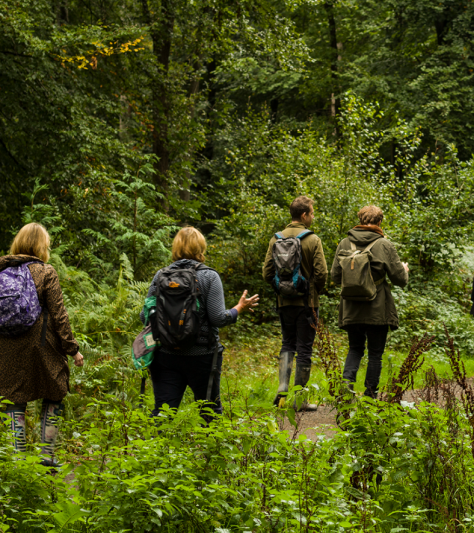Restocking pedunculate oak plantations
This case study looks at how Sotterley Estate have been restocking plantations since 1993, latterly adopting Lemair's system of “active silviculture” with the aim of reducing oak rotation from 140 years to 120 or even 100 or 90 years.
Sotterley Estate, Suffolk
Establishment
The old crop (oak with ash over hornbeam, hazel etc.) is felled and extracted in late August/early September while the land is still dry. The top 37cm (15inches) of soil are then loosened with the bucket of a tracked excavator to break the pan caused by extraction equipment. This improves drainage. Care is taken not to invert the soil. Existing ditches are desilted and the site wired against rabbits and hares.
Planning allows for long straight rows without cross ditches in order to facilitate mechanical weeding. Planting of two-year-old transplants spaced at 1×1.5 metres gives 6,700 per hectare. Planting at this density is common practice in Denmark and reduces the weeding period by accelerating canopy closure. It also encourages a degree of natural selection as the more vigorous trees race for the light and suppress the weak. At this density, there is a substantial pool from which to select the “Winners”.
Planting material is grown from acorns collected from superior Dutch, Danish and British provenances, treated and stored at Forestart in Shropshire until the spring when it is sown at Parks Farm Nurseries near Newent.
After two summers, plants graded 40/60 cm are collected and planted.
Maintenance
Weeding young plants is accomplished using a flail mounted on a garden tractor. Strimming within the rows may be required. Canopy closure can be expected six years after planting.
Cleaning of sallow, ash and other woody plants is usually necessary prior to and after canopy closure. Naturally regenerating hornbeam is encouraged but held in reserve below the canopy.
In East Anglia, hornbeam is the essential handmaiden to oak, ensuring clean epicormic-free stems. Wolf oak are removed when the trees reach about 6 metres tall and respacing, Fig 3 overleaf is required at 7 or 8 metres, or about 14 years old.
Extracting young oak
In 2016/17, Sotterley established extraction racks at 10 metre intervals in 15-19 year old compartments.
Men using chainsaws leave the poles in small heaps in the racks, which are collected by a Kubota garden tractor equipped with hydraulic grab and left rideside whence the poles are taken on by forwarder and stacked adjacent to all-weather tracks.
There is a ready local firewood market for these poles.
Active Silviculture: Lemaire’s system
Young plantations are being converted to Lemaire’s system of “active” or “dynamic” silviculture to reduce the length of an oak rotation.
Lemaire teaches that the period of maximum youthful vigour in oak becomes apparent when the tree is between 9m and 11m tall (15-21 years old). He believes if this period of vigour can be extended by free-growth, then it is possible, on good soil, to achieve 65cm diameter breast height with 6m of clear stem in less than 100 years. If, however, this youthful energy is checked by, for example, crown competition with neighbours, he states vigour is lost, and trees are committed to the traditional 140yr rotation.
With Lemaire’s “active sylviculture”, about 80 final crop trees or ‘Winners’are selected when 9m (about 15 years old) is reached. In a perfect world, these ‘Winners’are spaced 12m apart but in real life, more often between 7mand 14m. Above all else, the ‘Winners’ must display superior vigour, be free from epicormics and show reasonable form.
Thereafter, expenditure is concentrated on these ‘Winners’, firstly on halo thinning every 3 or 4 years to allow the selected crowns to spread freely, Fig 4 opposite, and then on high pruning. It is crucial to this system that the crowns of the ‘Winners’ are never in competition with neighbouring trees. The numbers of remaining stems will reduce over time as successive thinnings favour the continued free-growth of the Winning crowns.
Cautionary note:
Lemaire’s target diameter at 90 –100 years is only 65cm dbh. This is generally unattractive to British sawmills, where markets pay a premium for butts achieving 80cm. Under current market conditions, it would pay to wait in order to achieve this girth. On good soils, this means a rotation of 120 years – but this is still a significant improvement on the traditional 140 or 150 years.
A recent inspection (2016) of free growth plantations in England and Wales showed that Lemaire’s targets are achievable in southern Britain.
Grey Squirrels
Growing prime oak in Britain is not possible without systematic and constant grey squirrel control. The estate spends nearly £10,000pat o protect 170 Ha of scattered broadleaved woodland.
Woodland Heritage, Future Trees Trust and the Forest Sector, Department of Agriculture Food and Marine (Ireland) helped make it possible for Bede Howell to translate Jean Lemaire’s Le chene autrement and publish it in Britain under the title Oak: fine timber in 100 years. Copies can be purchased at www.futuretrees.org

